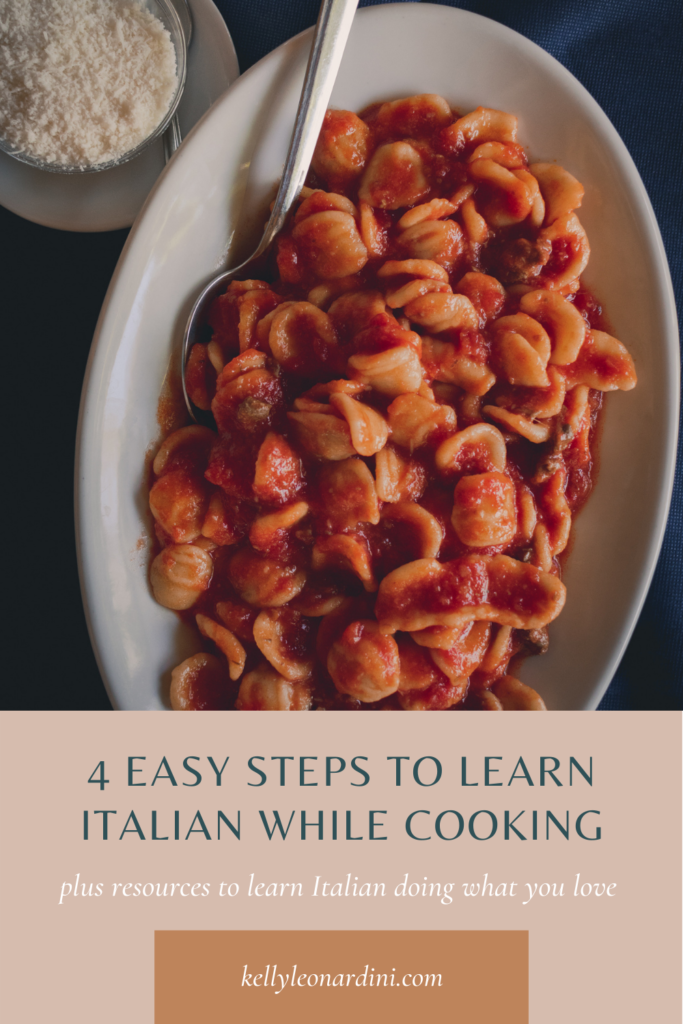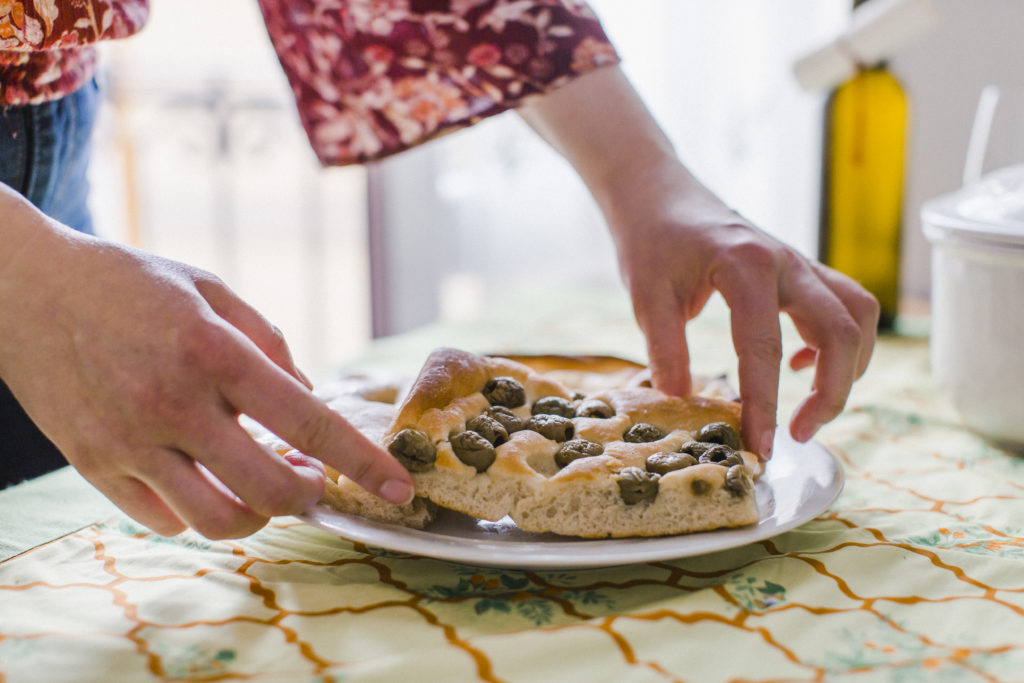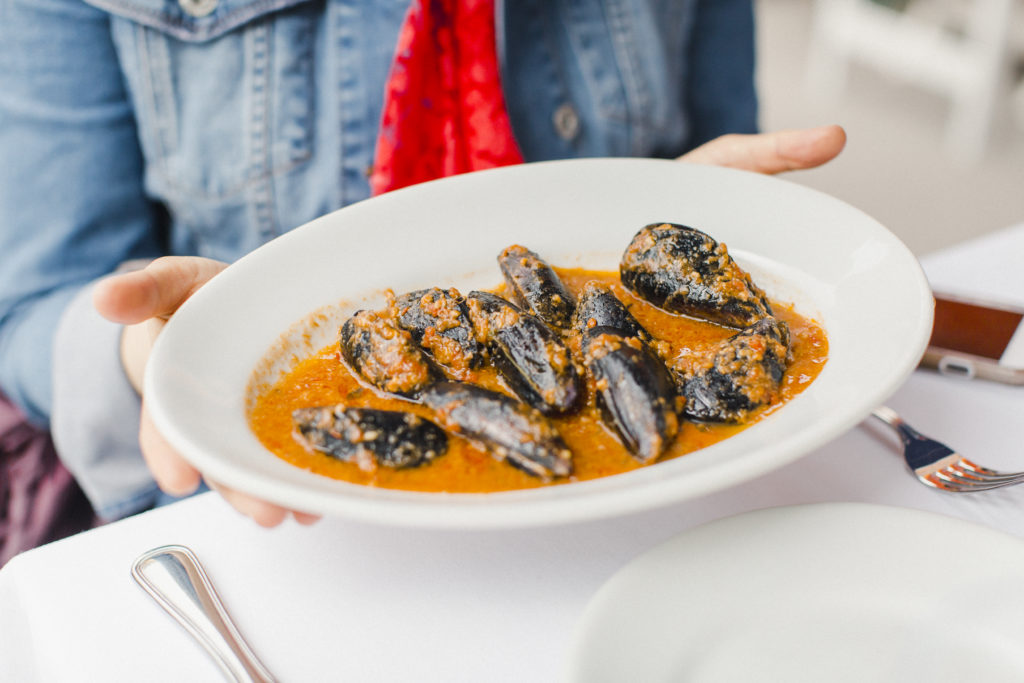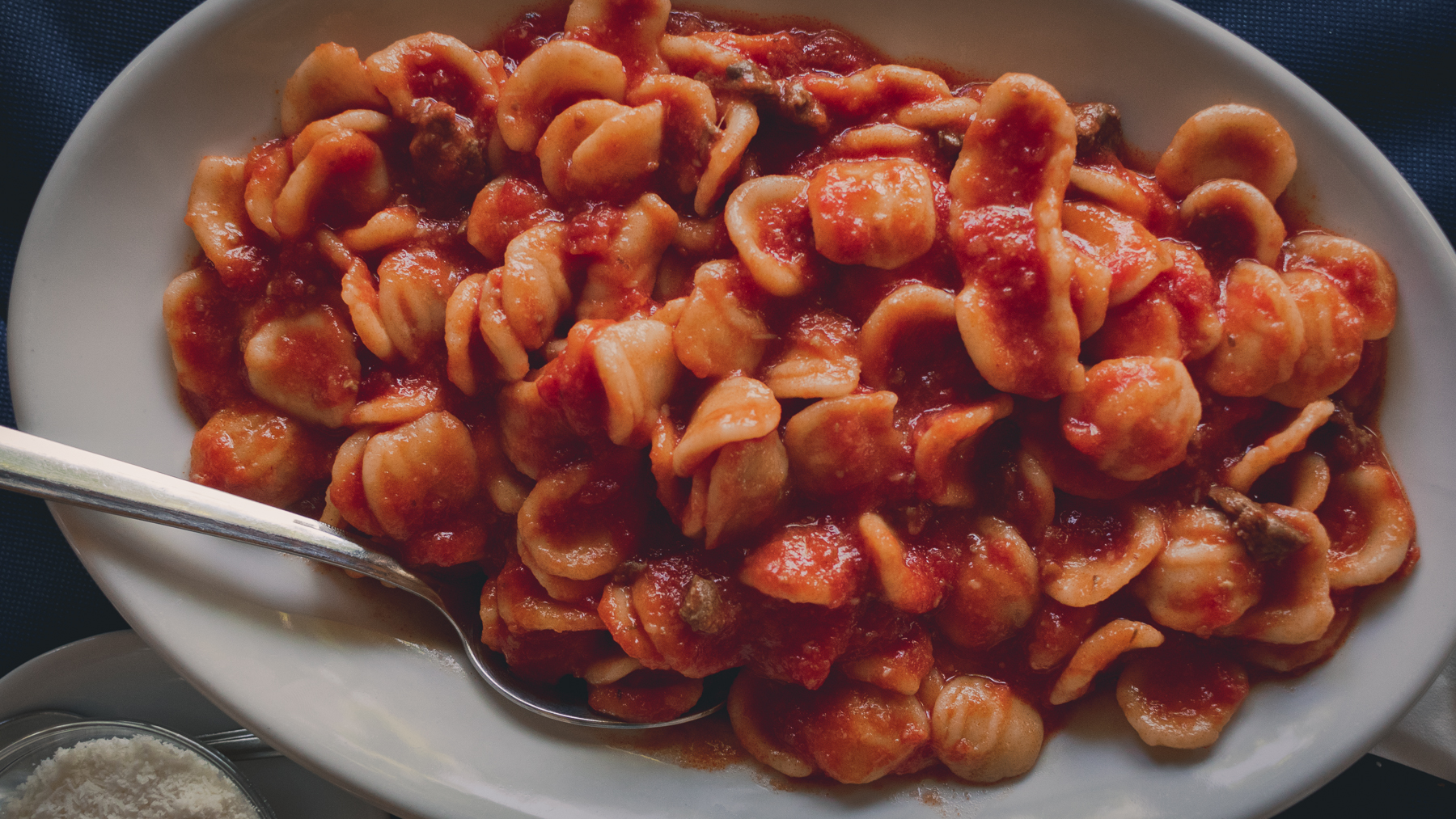March 1, 2021
As both a professional English instructor for international students and a lifelong Italian student, here’s my guide for maximizing the benefits of learning a language while cooking.
I’ll give examples of how to learn Italian since that is the language I’m currently learning, but all of these principles can easily be transferred to any language!

Why Cooking is a Great Activity for Language Learning
It goes without saying that the results of learning Italian through cooking are delizioso! Additionally, there are actually several pedagogical reasons why learning Italian through cooking can be extremely effective and beneficial.
Physical activity
We often think of learning a language as a sedentary act done behind a desk with sequential lists of grammar and vocabulary to memorize. However, research shows that “physical activity engages several systems of the brain that boost attention, memory formation, and retention” (Jensen).
While cooking, you are actively engaged in a variety of physical activities, such as measuring, pouring, mixing, or kneading. You can hold the vocabulary in your hand, rather than just words a book. It’s a sensory experience of sight, smell, taste, touch, and even sound. Cooking allows us to create an experience, and therefore a memory, in the target language.
In fact, this learning technique of combining physical activity with language learning is called Total Physical Response (TPR) in the teaching world. The goal of TPR is “to create a brain link between speech and action to boost language and vocabulary learning.”
Choose a subject you are interested in
When you’re interested in what you’re learning, you become more relaxed and have more fun. This lowers what linguistic researcher Stephen Krashen calls the affective filter, which states that a learning environment must be conducive to the emotional needs of the learner in order to be beneficial. When we are learning in a way that suits us through a subject that we are interested in, motivation increases. The focus can be on having fun, rather than perfection.
Produce something using the target language
When cooking, there is a tangible outcome, something to be created with the target language. This gives the target language a greater purpose, to complete a task or project. This is along the lines of Project Based Learning (PBL), in which students engage in “real-world and personally meaningful projects.” Language becomes a tool that helps us achieve our goals.
Interact with others
It’s important to study grammar structures, but sometimes it’s nice to have a break and just use language for its ultimate purpose: to communicate and connect with others. In fact, communicative language teaching emphasizes interaction as the “means and goal of language learning.” This teaching style emphasizes the use of authentic materials – those that are created for native speakers (rather than language learners), such as recipes. In addition, cuisine naturally yields conversation and interaction when cooking together or around the table.
Connect to the culture
Both language and cuisine are an extension of culture. Especially in regards to Italian cuisine, it’s a wonderful way to learn about the typical dishes of each region and how dining plays a vital role in the Italian lifestyle.
Translation
Translation can be useful to understand the sentence structure of Italian compared to English. Sometimes there are even fun phrases that don’t quit translate, like “butta la pasta!” (literally “throw the pasta,” which would be equivalent to the English, “put on the pasta”). There are even some Italian words that don’t have an English equivalent, such as mantecare, the process of making something creamy, such as finishing risotto with butter and cheese.
Context
Just because the focus isn’t explicitly on grammar, doesn’t mean that you won’t still be learning grammar. In fact, using grammar in context assists in constructing meaning. Here are several grammar topics that can naturally be integrated into cooking:
- Descriptions (adjectives)
- Comparisons (comparative/superlative)
- Conditionals
- Subjunctive (opinions)
- Imperative (giving instructions)
- Among others!

4 Easy Steps to Learn Italian While Cooking
To get the most out of learning a language while cooking, it’s important to include all skills (reading, writing, listening & speaking). The goal is to expose yourself to input that will allow for repetition and a balance of passive (reading, listening) vs. active skills (listening, speaking).
- READING
Read the recipe as well as some background about the dish, such as its origins and history.
2. LISTENING
Next, listen to the same recipe on YouTube and see if you can recognize any familiar vocabulary words.
3. WRITING
Keep track of new vocabulary in a notebook or a digital flashcards app such as Reiji or Quizlet.
4. SPEAKING
Practice pronouncing the new words, saying each step as you make the recipe. Better yet, have a conversation about the recipe. Italian teachers Barabra (@time_to_be_Italian) & Elfin (@allaboutitalian) have created Cook & Chat exactly for that purpose!

Essential Resources for learning Italian through cooking
Cook & Chat with Barbara & Elfin
Barabra (Time to Be Italian) & Elfin (All About Italian) are a team of Italian teachers who host Cook & Chat, an online cooking and speaking learning experience. Italian students from around the world connect on Zoom. Barabara cooks in Italian while Elfin keeps the chat going and answers questions about Italian. The learning atmosphere is fun, engaging, and encouraging. A glass of wine is welcome, too. It’s an Italian learning dream come true!
Bilingual English-Italian food blogs
Recipe websites in Italian
- Giallo Zafferano
- Ricette della Nonna
- Misya
- Ci Piace Cucinare (also a print magazine)
- Cucchiaio d’Argento
Cookbooks in Italian
- Cucchiao d’Argento
- Artusi. La scienza in cucina e l’arte di mangiar bene
- Scarti d’Italia
Italian cooking channels on YouTube
Italian cooking shows
(Full episodes of all of the shows above are available on YouTube).
Netflix cooking shows available in Italian
- Sale, grassi, acidi, calori (salt, fat, acid, heat)
- Chef’s Table
Happy language learning & happy cooking!


Comments